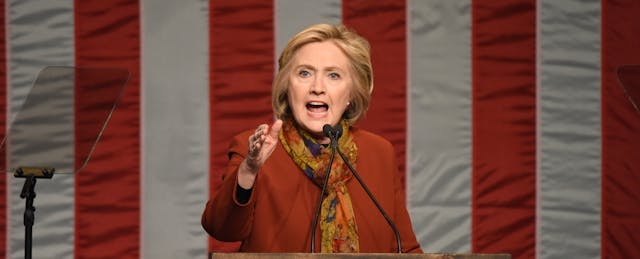Hillary Clinton may not be in office, but she has enough policy plans on her website for four full years.
At a June 27 rally in Denver, Hillary Clinton outlined her Tech and Innovation Agenda that included a number of edtech items. Her boldest claim: That her administration would close the digital divide by 2020 with 100 percent of American families having the "option" of quality broadband.
She also set goals of reducing student loan debt and raising the level of STEM education in her sights, releasing policy briefs on student loan forbearance for young entrepreneurs, federal loan forgiveness for social enterprises, teacher training in computer science, expanded STEM education in high schools and federal funding for coding bootcamps and nanodegrees.
Clinton’s plan for young entrepreneurs would allow them to freeze their federal student loan payments for up to three years without accumulating interest. Both founders and “early joiners such as the first 10 or 20 employees” would be eligible. Clinton’s proposals would go even further in supporting entrepreneurs who start businesses or social enterprises in “distressed communities:” These founders would be eligible for $17,500 of loan forgiveness after five years of running their enterprises.
As for computer science, Hillary aims to expand the number of technical teachers in America to provide broader access to science and engineering curricula. Clinton stressed her support for Obama’s CS4All initiative and pledged to launch the next class of Investing in Innovation (i3) grants by doubling federal investment in the program. She also hopes to facilitate the training of 50,000 computer science teachers over the next ten years by engaging private sector companies, increasing federal aid and supporting a wider array of professional development programs.
On the STEM front, Clinton’s plan called for greater support for local initiatives such as makerspaces or technical after-school programs and involving more underrepresented populations. She called out several successful schools by name: Cleveland Metropolitan School District, Denver’s School of Science and Technology and the Science Leadership Academy of Philadelphia, among others.
In a section titled “Build the Human Talent Pipeline for 21st Century Jobs,” Clinton outlined her plan to shake up higher education and job credentials. She pledged that her administration would commit $10 billion in federal funding toward students enrolling in “promising new programs—such as nanodegrees, accelerated learning programs for computer coding, career and technical training, certificates for “specializations,” and online learning.” She also hopes to push and incentivize colleges toward accepting credits from these programs.
Clinton also made diversity in the tech workforce one of the goals of her higher education and job training strategy. She proposed a $25 billion fund dedicated to Historically Black Colleges and Universities and Minority Serving Institutions. She also advocated vocational training for young people, asserting that her administration would “invest $20 billion in youth jobs and pathways for individuals from disadvantaged communities—through support for models like linked learning, P-Tech, apprenticeships, and Career Academies.”


